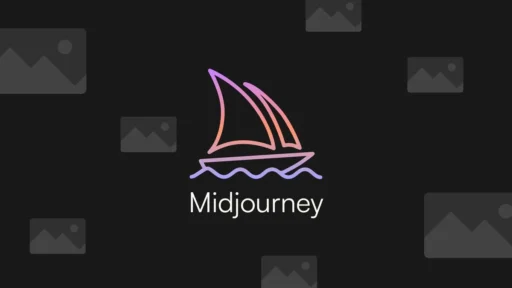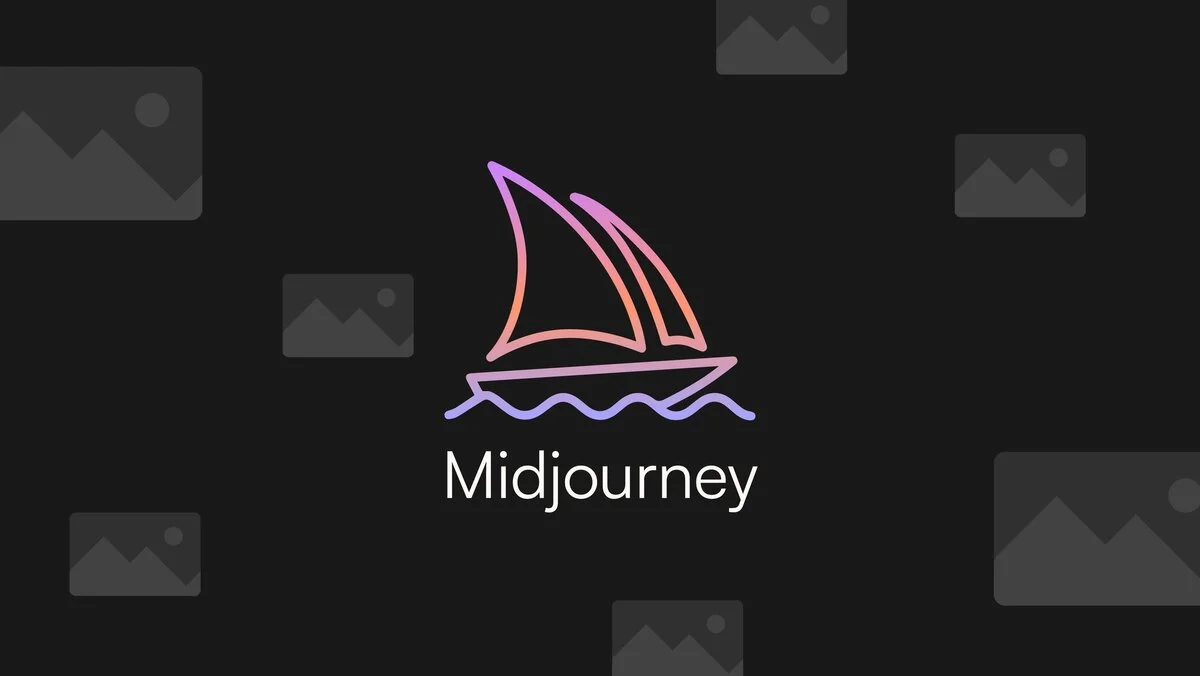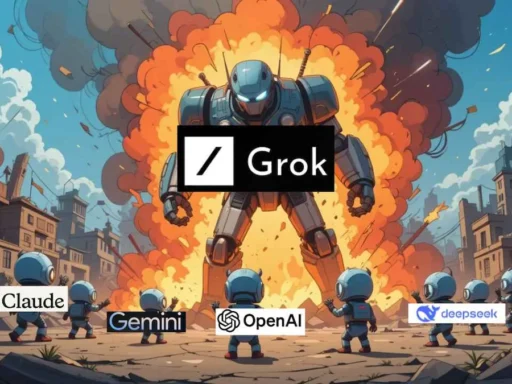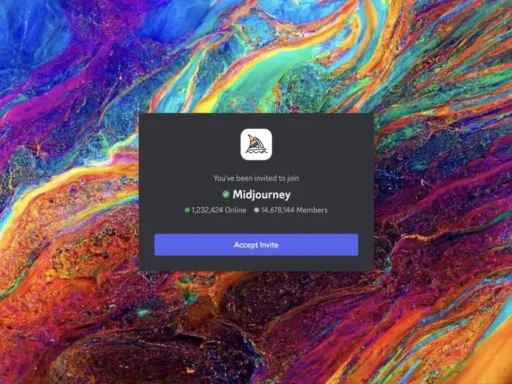If you’ve ever sat at your screen feeling creatively stuck, staring at a blank canvas in Photoshop or Illustrator, you’re not alone.
Now imagine typing a phrase—”fog-swept Tokyo skyline in Van Gogh’s brushstrokes”—and watching that vague idea morph into a vivid, high-res digital artwork in seconds.
That’s where MidJourney V5 Alpha steps in.
The fifth-generation alpha release isn’t just another update—it’s a system overhaul.
From sharper textures to more intuitive prompt processing, it’s giving artists tools that feel more like magic than software.
For creators, marketers, educators—and especially for startups chasing visual innovation on a bootstrapped budget—this isn’t futuristic fluff.
It’s a power tool dressed as an AI prompt box.
This post walks you through the evolution, use cases, standout features, and real-world results from MidJourney V5 Alpha.
We’re peeling back the UI, revealing what makes this engine tick, and how you can wield it.
Let’s dive headfirst into what the future of generative AI art really looks like.
MidJourney V5 Alpha: A Game-Changer in Creative AI
MidJourney V5 Alpha didn’t sneak onto the scene—it exploded.
This alpha release marks a key shift in how generative art platforms support creativity at speed and scale.
Artists no longer need complex software stacks or hours of post-editing.
They just need an idea, a decent prompt, and time to run with it.
Compared to previous versions, V5 Alpha feels faster, thinks clearer, and outputs with photographic realism.
It decodes stylistic intent better than before, incorporates lighting, shadows, and nuanced styles like charcoal, acrylic, or cyberpunk noir—all without breaking a sweat.
But what really sets it apart?
Its mockup potential.
Designers and developers can rapidly prototype campaign visuals, UI elements, or storytelling scenes.
And startups short on staff but high on vision finally have a creative equalizer.
Whether you’re tweaking ad banners, setting up game environments, or creating therapeutic landscapes for a mental health app,
this version feels tailored to how different industries use images—not just how artists paint them.
Why It Matters: Transforming the Creative AI Landscape
Generative AI isn’t just making weird, cool images anymore.
It’s putting pressure on five major industries to change how they communicate:
- Art: From galleries showcasing AI-generated murals to solo artists redefining exhibitions via MidJourney prompts.
- Health: Using AI imagery for visual therapy, especially for trauma patients needing non-verbal healing methods.
- Finance: Turning dense reports into infographics generated through prompt-to-layout tools.
- Education: Creating visual aids in seconds that would’ve once taken a whole design team.
- Travel: Simulating “a walk through ancient Pompeiian streets at dusk” for campaigns or virtual guides.
MidJourney V5 Alpha isn’t just accelerating creativity; it’s accelerating decision-making.
Speed matters when fast-shifting market trends demand compelling visuals in minutes—not weeks.
You’ve got creative directors asking for new mockups by noon and campaign deadlines shifting in real time.
V5 Alpha lets vision catch up with urgency.
More importantly, it’s democratizing digital artistry.
Where premium software licenses used to block access, this AI lets anyone with bandwidth and curiosity tap into design ecosystems
previously reserved for funded studios or media giants.
In short?
It’s not just transforming art.
It’s rewriting who gets to make it and how fast they can put it out into the world.
MidJourney V5 Alpha in Action: Key Features and Innovations
There are two categories of people using this new MidJourney release: Those who want speed and those who want surgical control.
V5 Alpha delivers both.
The new core advancements make it ridiculously powerful in production pipelines:
– Adaptive prompt parsing: Words like “realistic noir with bioluminescent fog” come out exactly as they sound in your imagination.
– High coherence output: Forget distorted fingers or bizarre shadow artifacts. Outputs now follow lighting logic and spatial geometry much better.
– Better scalability: Whether you’re working on mobile, cloud, or stacking outputs in batch mode—this thing holds its ground.
Let’s put it side-by-side with other major platforms like DALL·E and Firefly.
| Feature | MidJourney V5 Alpha | Adobe Firefly | DALL·E 3 |
|---|---|---|---|
| Stylistic Flexibility | High (custom + cinematic ranges) | Moderate (mainly photo-realistic) | High but repetitive over styles |
| Custom UI Tweaks | Integrated via Discord | Available via Adobe tools | Minimal UI customizations |
| Run Speed | Fast (batch + flex options) | Variable based on Creative Cloud | Moderate but consistent |
For users scaling operations—think film concept artists or branding teams—optimization and resolution sharpness win over flashy animations.
And that’s where V5 Alpha is killing it.
AI Digital Art Innovation
The first reaction most people have after trying MidJourney V5 Alpha?
“That looks like a photo.” Followed by: “But I didn’t tell it that much.”
That’s the power of its fine-tuned output engine.
It’s taking more subtlety from your prompts—mood, lighting tone, perspective—and turning it into storytelling-grade visuals.
We’re not just talking static portraits but dynamic mise-en-scène:
burned desert alleyways, stormlit courtyards, crystalline oceans reflecting neon skies.
The training data pulls from an enormous range of cultural, cinematic, and artistic sources.
That means it doesn’t only know what “vaporwave” or “Renaissance oil bloom” are—it can remix them with precision.
Whether you’re building a comic book, an ad storyboard, or an animated treatment guide for medical use—
this tool bridges the gap between imagination and visual output without gasping for GPU space.
And yeah, you can still generate crazy concepts like “cybernetic koi swimming around a robotic monk,”
but now they arrive looking like you hired five freelancers and a VFX team to render it overnight.
MidJourney V5 Alpha Use Cases Across Industries
It’s not all art for art’s sake.
The tech is leaking into real business pipelines across sectors.
Here’s where it’s already reshaping workflows:
Digital Art and Design:
Visual dev teams are using it to rapidly iterate on UI backgrounds, moodboards, and book covers.
Their production speed? Doubled.
Advertising and Marketing:
Agencies can now pitch with fully-formed visuals made overnight.
That’s not just cost-saving—it’s mindshare grabbing, especially when clients need “wow” on a budget.
Health and Education:
One startup is building low-anxiety therapy environments using MidJourney-generated scenes—think calming forests, safe interiors, peaceful lakes.
Schools are prototyping interactive history maps and cultural environments using it too.
Travel and Tourism:
Cities looking to draw younger tourists are crafting MidJourney-generated teaser visuals: hyperreal versions of landmarks,
“what if” reconstructions of ancient ruins, and surreal event promo posters.
As AI tools become normalized, those ignoring visual integration risk being left behind.
If you’re working in a visual-first industry, that’s not cute—it’s existential.
Emerging Trends in Generative AI Technologies
Artists and designers are asking a new kind of question now: “Is this image AI-generated… or just my imagination?” That blurred line is no accident — it’s the result of a new wave of generative AI breakthroughs, and MidJourney V5 Alpha is surfing right at the front of it.
Recent developments in training methods have shifted from conventional supercomputers to more optimized, modular architectures. These models now thrive not just on vast datasets, but smartly curated ones, cleaning out the visual noise and bias that plagued earlier versions. The result? Crisper compositions and stylistic fidelity that weren’t possible six months ago.
MidJourney V5 Alpha has evolved accordingly. Its neural layers now support adaptive text-prompt weighting — meaning users can specify detail levels in certain parts of the image while letting the algorithm freestyle elsewhere. This setup creates a semi-collaborative dynamic between human and machine, where intention meets improvisation.
We’re also seeing edge-to-cloud rendering kick in. Instead of relying solely on centralized GPU power, MidJourney now pushes lightweight renders to edge networks, enabling faster previews and iterations. This evolution shortens the wait time between prompt and result — a huge shift for multimedia artists under tight deadlines.
Bottom line: MidJourney V5 Alpha isn’t just an engine — it’s starting to feel like a co-creator that learns your visual DNA the more you use it.
AI and Digital Art Integration
Something curious is happening in gallery spaces and virtual boards alike: traditional painters, collage artists, even sculptors are teaming up with generative AI tools like MidJourney V5 Alpha. And the results? They’re not replacing human creativity — they’re remixing it.
Artists like Mariko Ishii, who once painted exclusively with acrylics, now feed scans of her brushwork into MidJourney to generate dreamlike variations. Meanwhile, comic illustrators are using AI outputs as base layers to speed up laborious background fills, then painting key characters by hand — a process one artist called “machine sketching with a human finale.”
MidJourney V5 Alpha enhances these collaborations with better semantic parsing of poetic inputs. Type in “fog like burnt silk over a lost city skyline” and it reads not just literal words, but implied moods and texture cues. This gives visual artists an entire mood board in seconds.
These fusions are sparking genre-bending hybrids — think digital tapestries that blend Dürer engraving styles with vaporwave palettes. The tech isn’t stealing soul from art. It’s helping artists build new ones.
AI Startup Trends Transforming Digital Art
Big players aren’t the only ones innovating. Gen-Z-led startups and indie dev shops are reconfiguring the art-tech equation with ambitious AI-driven platforms. Investors are pouring funding into platforms that promise ethical sourcing, open datasets, and artist-first design systems.
One London-based startup, NeonFrame, just secured a $10 million Series A funding round for its generative animation suite that plugs directly into MidJourney V5 Alpha outputs. They’re targeting short-form creators on TikTok and Vimeo who want cinematic aesthetics without big-studio budgets.
Meanwhile, a wave of acquisitions points to consolidation: larger firms are scooping up smaller AI art startups before their engines become the next standard. It mirrors what we saw in web video a decade ago.
But it’s not all smooth sailing. Startups face big questions — how do they ensure copyright-safe training data? How do they handle accountability when an AI engine produces unintentional mimicry of a real artist’s work?
There’s movement toward transparency: startups using MidJourney’s API integrations must now document prompt lineage — a kind of genetic trace from input to output. It’s not a perfect solution, but it’s a start. In this space, integrity is a UX feature.
Designing with Generative AI: Techniques for Artists
Artists diving into the world of MidJourney V5 Alpha often ask the same thing: “Where do I even start?” The good news is, it doesn’t require a computer science background — just curiosity, and maybe some caffeine.
- Use layered prompts — describe materials, lighting, mood, and formats distinctly. The engine rewards specificity.
- Combine user-uploaded textures or sketches with AI-generated overlays for richer outputs.
- Leverage repeat seed functions — this lets you iterate designs around a stable core structure, perfect for brand cohesion.
MidJourney V5 Alpha also trims down the chore work. Logo concepts, background gradients, UI mockups — what used to take hours now gets prototyped in minutes.
Visual designer Franco Vega prototyped three mobile app themes with V5 Alpha as his rough sketchpad. “I didn’t need it to be perfect, just provocative. And five prompts later, I had more ideas than clients to pitch them to.”
This engine isn’t just a toy. For freelancers trying to differentiate themselves — it’s a power tool.
Case Studies in Creative AI Success
Across industries, creative teams are fusing MidJourney V5 Alpha into the heart of their workflows. And the difference shows in timelines and final products.
Marvel’s marketing team used MidJourney V5 Alpha to generate initial moodboards for a streaming campaign around its cosmic-themed characters. Instead of outsourcing hundreds of variations to human illustrators, they created 80+ concept boards in one brainstorming session — visuals that later inspired props, sets, and merchandise.
Meanwhile, Berlin-based agency ElevenPoint used V5 Alpha to guide sound-reactive visuals for a music tour’s lighting design. By generating images in response to musical key changes, they built kinetic content that synchronized with live percussion without manual mapping.
For RedShift Games, the turnaround story was financial. They slashed 40% of early art development costs by using MidJourney Alpha outputs to guide their texture teams — “just enough style direction to stay consistent, but flexible enough to change fast,” said their creative director.
In each case, MidJourney wasn’t replacing the artists — it was amplifying idea velocity.
Behind the Scenes: How MidJourney V5 Alpha Works
At the core of MidJourney V5 Alpha sits a refined generative adversarial network (GAN) stack — but it’s not your typical plug-and-play model. This version evolved with enhanced context retention and probabilistic attention spanning across token slices.
The breakthrough? MidJourney’s shift toward hybridized diffusion-transformer architecture. This means the model doesn’t just understand what a “foggy port at dusk” looks like — it calculates which moments in visual space are most likely to matter based on narrative intent.
Backing it up is a rebuilt training corpus that’s been aggressively filtered for NSFW data, data leaks, and visual noise — integrating reverse-indexing that maps output traits to data clusters. That’s how it learns style drift without copying one-to-one.
Power demands dropped, too. By implementing asynchronous vector pruning during image upscaling, MidJourney V5 Alpha renders faster and greener than its predecessors. Pixel-perfect results don’t need massive GPU farms anymore.
For users, all this translates to fluid command of style, tone, era, and material — whether you’re sketching medieval dreamscapes or kinetic brand identities. Technically dense? Sure. But it feels like magic when it works.
Addressing Ethical and Technical Challenges in Generative AI
Generative engines win headlines, but they rarely win consent. MidJourney V5 Alpha, while powerful, inherits the field’s biggest controversies like unwanted relatives showing up at an art show.
Copyright law hasn’t caught up. Even with MidJourney’s filtered dataset claims, artists have discovered visual echoes of their original work in AI outputs. That raises familiar questions: is derivative design theft, homage, or mathematical coincidence?
Creative labs using the platform are now embedding chain-of-custody metadata in outputs. It’s a soft solution — a visible paper trail, not a legal fix.
From a tech standpoint, current safeguards lag behind output capabilities. Prompts can still bypass filters. Concept drift can still produce mutated, glitchy representations if prompts get too poetic or abstract. Technically, the model overfits on vague aesthetics — beauty turns blurry.
What V5 Alpha needs next is more than debugging. It needs a rights-aware training protocol. An opt-in creator registry. And better visual watermarking that doesn’t shred the output quality.
Because at the end of the day, if AI art can feel human, it better respect the humans who built the culture it borrows from.
Advancing AI for Creative Industries
Let’s get real—AI isn’t going anywhere. Especially not in creative industries. MidJourney V5 Alpha is right in the middle of this explosion. It’s not just pumping out pretty pictures—it’s shifting how we define creativity itself.
Think about this: Before, if you wanted to visualize a futuristic cityscape or redesign a product prototype, you’d either need to hire a designer or spend weeks mastering fancy design tools. Now? Type your thoughts. MidJourney cranks out an image that looks like it came from a AAA video game storyboard or a concept artist for Marvel.
We’re seeing serious traction in industries like fashion, film, gaming, and architecture. Designers are using MidJourney to prototype clothing lines. Game developers draft environments in minutes. Hollywood storyboard teams? They’re cutting hours of manual sketching.
Soon, AI like MidJourney won’t just assist creatives—it’ll pair with them in real-time. AI whisperers replacing Photoshop power users. That’s where it’s heading.
Prediction? Creative teams will be built less around tools and more around story, emotion, and user experience. Because AI’s got the heavy lifting.
The Role of AI in Democratizing Art Creation
Most people think they’re not “creative enough” to make art. MidJourney V5 Alpha turns that idea on its head. All you need now is clear intention and a few words.
Let’s say you’re running a tiny e-commerce shop. You need product branding, social graphics, mood boards. Hiring designers full-time? Not in the budget. But with platforms like MidJourney, you feed it prompts—think “sun-drenched skincare ad with 70s vibes”—and boom, you’ve got visuals. Freelancers, startups, and side hustlers can build brands that look ten times their size from day one.
But it’s not just about access. It’s also about confidence. You don’t have to be a trained illustrator anymore. Just bring the vision. AI handles execution. We’re skipping the gatekeepers.
Here’s what happens next:
- Beginner creators will outpace legacy creatives still clinging to old workflows.
- Freelancers will build premium portfolios without investing in complex software.
- Students with a laptop and an internet connection? They’ll lead full creative agencies from their dorm room.
This isn’t just art—it’s access. MidJourney makes the starting line equal.
Building a Community Around Generative Art
MidJourney V5 Alpha isn’t just a tool. It’s a movement. The users are building ecosystems, not just images. Every Discord channel, subreddit, and shared folder fuels the next wave of visual storytelling.
We’re seeing deep collabs between techies and artists. Coders bring system logic. Visual pros bring aesthetic instincts. Together, they’re making styles the world’s never seen before.
Creators are hanging out on forums trading prompts like designer NFTs. They’re launching challenges—think “cyber-wilderness” themes—and remixing each other’s outcomes. It’s organic. Hyper-creative. Wildly fast-paced.
Popular hangouts? The official MidJourney Discord is a hub. Gumroad and Notion hubs offer pre-built prompt libraries. People are even monetizing their custom model workflows.
Whether you’re a dev or a doodler, there’s a seat at this table.
Expert Insights on Generative Art Software Releases
Here’s the deal: Not all generative art software is built the same. MidJourney V5 Alpha is making noise because it narrows the gap between your mental image and digital reality faster than anything else out there.
Clarity in prompts. Control over aesthetics. Nearly zero post-editing.
Compare that to competitors. They may generate faster, but the outputs? Chaotic without proper training data or prompt structure. V5 Alpha balances speed with quality.
Advice for startups looking to enter this space? Ignore the hype and watch user patterns. Listen during community prompt reviews. See what users struggle to make. There’s your gap.
A few smart plays for devs:
- Create UI layers that help newbies translate messy ideas into sharp prompts.
- Embed personalization options—users want outputs that match their vibe, not generic stock images.
- Build bridge features—teams are begging for smoother pipelines from prompt to post-production.
V5 Alpha is leading because it listens like an artist and delivers like a machine. Period.
Driving Innovation Across Industries with Creative AI
We’re past the point where AI tools like MidJourney V5 Alpha are strictly for digital artists. They’re breaking out—into branding, product design, retail, and beyond.
A few months ago, I sat down with the creative lead of a sustainable sneaker brand. They prototyped 18 different shoe concepts using AI-generated mood boards and color maps. What used to take six weeks? They did in six days. Supplier negotiations started faster. Marketing visuals were pre-mocked before they’d even sourced the fabric.
Early adopters are treating AI like turbo fuel:
- Ad agencies are stress-testing packaging concepts before a single print run.
- Architects are rendering community housing concepts with layered detail for stakeholder buy-in.
- Book authors are using V5 Alpha to generate cover art that actually sells stories visually.
Here’s the lesson: You don’t need to be an AI expert—just someone with ideas. If you can describe it, MidJourney will help create it. The winners? They’re playing with it now.
Call to Action: Adopting Generative AI Technologies
Stop waiting. MidJourney V5 Alpha isn’t future tech—it’s here now. Whether you’re in art, branding, or biz dev, generative AI multiplies output without dragging quality.
You don’t need a five-year plan to experiment. Open the tab. Write something bold. Watch what pops out. Then refine. Iterate. That’s the flow.
If you’re still on the fence, here’s what I recommend:
- Join the MidJourney community. Lurk. Learn. Practice.
- Run side-by-side tests—use it to redesign your IG brand, pitch deck, or packaging.
- Start building a prompt library—this becomes your secret creative toolkit.
And yeah—it’s on us to keep this ethical. Call out bias in outputs. Ask what data sets were used. Push for visibility. Advocate for fair credit when human creativity drives the prompts.
The tech’s evolving. But that doesn’t mean we check our humanity at the door.
Experiment loud. Advocate louder. This is the new creative floor. Don’t just watch—build with it.

